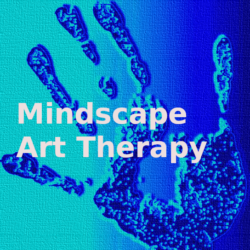Adapting to the demands of school is crucial for a child’s cognitive and emotional development, where it can help them develop resilience and adaptability to change. Research has shown that success in adapting to a new school, both socially and academically, can be crucial for future social and academic development.
Studies have shown that early intervention is crucial to help improve social and emotional development, thereby reducing behaviour problems, and improving academic success in later years (Docke & Perry, 2003, 2007)
Approx. 1 in 5 children and adolescents has a diagnosed emotional or behavioural disorder. The most common are anxiety, depression, conduct disorders, and ADHD (Koppelman, 2004) and these emotional and behavioural disorders may adversely affect learning through a lack of essential emotional skills (Koller and Bertel, 2006)
According to Woddis (1992), 40 percent of pupils will need some emotional support in their schooling, so interventions such as art therapy in schools can provide an effective, natural, and non-verbal approach for children to express themselves.

Research has found that art therapy can generate positive changes in areas of verbal communication, impulse control, social skills, attention span, and self-esteem (Klorer and Robb, 2012). Art therapy in schools can help children who struggle with classroom behavior, with some positive benefits for the locus of control and self-concept (Rosal, 1993), while McDonald, Holttum & Drey (2019) found benefits in emotional and mental health difficulties for children.
- Art Therapy in schools provides a creative hands-on intervention to improve emotional regulation.
- Creative approaches and art making can be a more natural way for children to express emotions
- This can help the child to learn healthy coping strategies and resilience.
- This can help to prevent maladaptive behaviour and ensure a smooth transition to school.
For more information contact us at Mindscape



Nice summary. You likely do not know that our team was awarded a 3.7 million dollar five-year grant where I am exploring trauma-informed practices through expressive arts therapy in classrooms. Mostly a focus through my “circle of capacity” model and embodied cognition and other principles. Very exciting to see our initial results!
Thanks Dr Cathy ,
That really is amazing about the grant and will be great to hear more about your work and theory.
Best wishes
Andrew
Great info – I am an Art Therapist working in a school setting for children and adolescents that have diagnosed emotional and/or behavioral disorders and can attest to the positive benefits, especially the learning of coping skills and resilience.
Thanks, Diane, and I am glad you found the article useful. Sounds like great work you are doing, and my work also has been working in a school for children with emotional and behavioural challenges. Art Therapy is highly effective.
You may also find another blog article interesting: https://arttherapyscape.com/art-therapy-and-autism/
As well as my recently published research:
https://www.tandfonline.com/doi/full/10.1080/17454832.2023.2172439
Wonderful!! I founded a Charity, Canvas Inspirations in 2015 and have been supporting this idea ever since. Educating the community about art therapy been our biggest challenge. Now with the rise in Autism, and other learning and behaviours issues, there is a slow recognition finallu spreading. Early intervention is the way to go!! Great work!
Hi Marie, Thanks for your comment and sounds like great work with your charity. It’s true that Neuro-diverse challenges are now being more recognised and understanding is improving.
You may also find another blog article interesting: https://arttherapyscape.com/art-therapy-and-autism/
As well as my recently published research:
https://www.tandfonline.com/doi/full/10.1080/17454832.2023.2172439